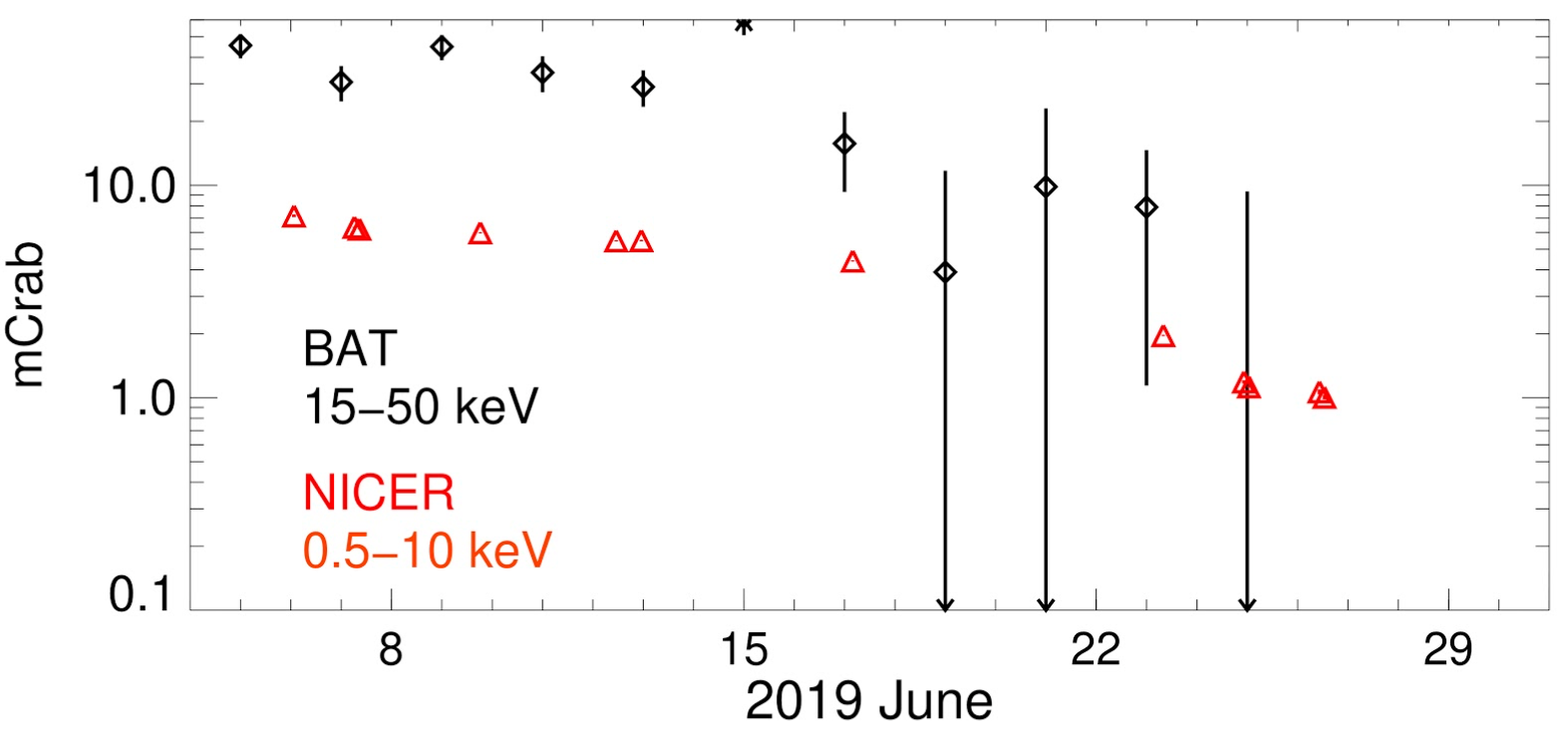NICER / ISS Science Nugget for June 27, 2019NICER puts a magnifying glass on a rare outburst from an accreting pulsarNICER has been monitoring a recent outburst from the neutron star binary system called 4U 1901+03, since February 15, 2019. The system is composed of a highly magnetized neutron star and a high mass companion star, probably more than 40,000 light years from the Earth. This is only the fourth known outburst of this source since its discovery in 1970 and the first one with good coverage in the soft X-ray range of NICER. NICER confirmed the presence of X-ray pulsations with a period of 2.762 seconds. Accreting pulsars with high mass companions typically have a dipole magnetic field that is more than 1012 times as strong as the magnetic field of the Earth. During outbursts, about 1010 tons of material per second fall from the companion onto the magnetic poles of the neutron star, with near-relativistic speeds. Most of the X-rays are assumed to be produced in column-like structures (accretion columns) above the poles with footprints of only 1 km2. Observations by the Burst Alert Telescope on NASA's Neil Gehrels Swift Observatory revealed a comparatively abrupt drop of the high energy X-ray flux from 4U1901+03, into non-detection, around June 17, 2019. In contrast, NICER observations of the lower energy X-ray emission showed a delayed drop in intensity. Due to the slower decay of the flux in the NICER energy range and the high sensitivity of NICER, highly significant detections were obtained on June 23, 2019 and beyond.
Such different behavior of the higher and lower energy X-rays toward the end of an outburst is not well studied yet and can be expected to be very revealing. It is generally consistent with the picture that the transfer of material to the neutron star declined so much that there are no accretion columns emitting significant high energy X-ray flux anymore and that the remaining lower energy X-rays are from the glowing surface of the neutron star. Important for regulating the transfer of matter and angular momentum onto the neutron star is the region around the Alfven radius, about 2000 km from the neutron star. At the Alfven radius, the magnetic energy density of the neutron star is comparable to the kinetic energy density of the accretion flow and material starts to move along the magnetic field lines onto the neutron star. These observations may allow us to probe processes near the Alfven radius as well as on the neutron star surface. This is a unique opportunity to better understand accreting pulsars, and NICER has increased its observing cadence of this object. NICER
|



